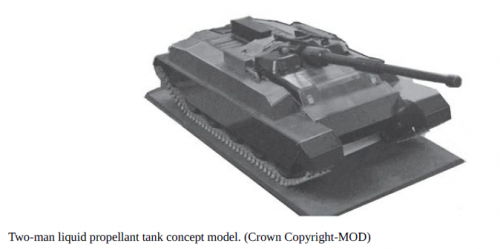Meanwhile work had begun on developing a successor to the Centurion, with the challenge of producing a vehicle that had the firepower and protection of the Conqueror but within a smaller, lighter platform. The army defined initial requirements for the new tank (Medium Gun Tank No. 2) in 1951 and Chertsey started to investigate concepts. Some work was undertaken on a ‘cleft turret’ concept, which dispensed with a mantlet and enabled a lower turret. In 1953 it was decided to investigate the use of liquid-propellant guns, but this approach was soon rejected and in 1954 it was proposed that a concept be developed based on a 105mm gun using bagged charges. The weapon requirement was then revised and the decision made that it should be a 120mm gun. This decision followed an assessment of the required performance to defeat an internationally agreed armour target designed to represent postulated future Soviet tanks. The work on the 105mm gun using bagged charges had shown promise and so was taken forward as the starting point for the new 120mm gun on the basis that it would save weight over more conventional gun designs. Meanwhile Chertsey had looked at a novel approach to minimising height – the use of a prone position for the driver. In 1956, to assess if this was feasible from an operational perspective, a test bed, designated FV4202, was built based on Centurion components. It had a meteor engine and mounted the 105mm bagged charge gun in a cleft turret and is sometimes referred to as the 40-ton Centurion.

